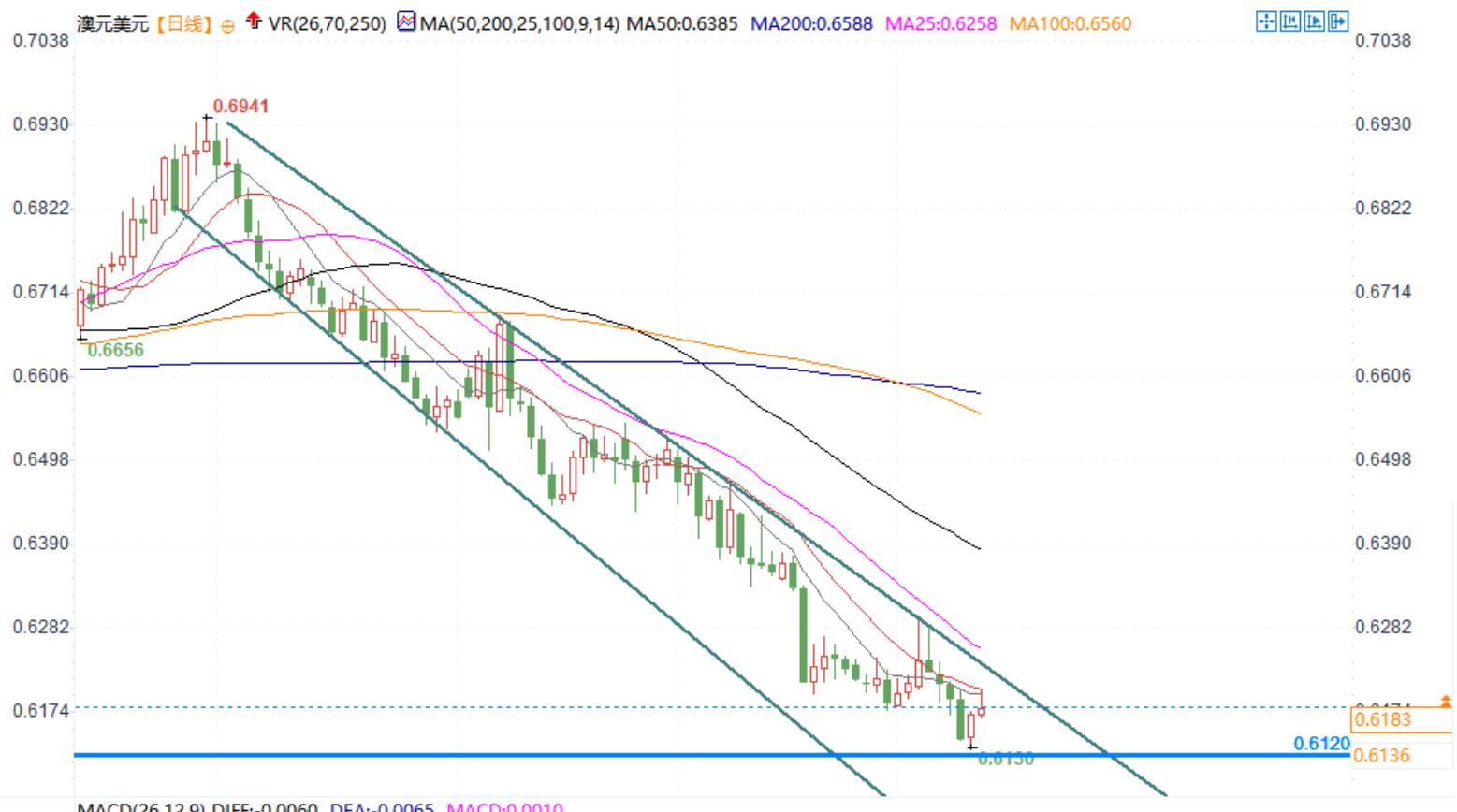Forex trading analysis: Australian dollar bears dominate, can CPI data reverse the trend?
In recent market trends, the AUD/USD exchange rate has continued its previous selling trend, hitting 0.6130 at one point (the lowest level since April 2020); On Tuesday (January 14th) during the European trading session, trading was around 0.619. This trend is mainly affected by the rise in the yield of treasury bond bonds of the United States and Australia and the strength of the US dollar in the global foreign exchange market. As the policy divergence between the Federal Reserve and the Reserve Bank of Australia gradually becomes apparent, the pressure on the Australian dollar continues to intensify.
US and Australian treasury bond bond yields rose
Recently, the yields of treasury bond bonds of the United States and Australia have both risen significantly. In Australia, government bond yields have climbed to 5.10%, the highest level since October 2023. Among them, the yield of 10-year treasury bond rose to 4.63%, and the five-year yield jumped to 4.20%.
Similarly, in the United States, the yield of the 10-year treasury bond bond rose to 4.78%, while the 30-year yield was close to 4.97% and fluctuated around 5%. The increase in yield indicates a market repricing of the monetary policy direction of the two central banks.
The potential impact of economic data on the market
On Wednesday, the US December inflation data will be released, and the market expects the year-on-year growth of the Consumer Price Index (CPI) to accelerate from 2.7% in November to 2.9%, while the core CPI is expected to remain at 3.3%.
If expectations are fulfilled, this data will be much higher than the Federal Reserve's target of 2.0%, indicating persistent inflationary pressures. This may enable the Federal Reserve to maintain a tough stance this year and limit market expectations of rapid interest rate cuts. Although the market currently expects the Federal Reserve to initiate a rate cut in July, if inflation data is strong, the timing of the rate cut may be further postponed.
Australia will release employment data on Thursday, which may further support the stance of the Reserve Bank of Australia to initiate interest rate cuts in the first quarter of this year. If the job market weakens, it will further intensify the downward pressure on the Australian dollar.
Market expectations and risk factors
The market currently expects US inflation to hover at high levels, partly due to policies that Trump may implement, including tariff policies and immigration restrictions. In addition, the fires in the Los Angeles area of California may further push up housing and insurance costs, thereby exacerbating inflationary pressures.
At the same time, weak domestic economic growth in Australia has further weakened the attractiveness of the Australian dollar. These fundamental factors together form the background for the current trend of the Australian dollar/US dollar.
Technical analyst interpretation:
On a technical level, the recent decline of the Australian dollar/US dollar has been very evident, having fallen below several key technical levels. The exchange rate has reached a multi-year low and is further approaching the key support level of 0.5860 below.

Moving Average System: The daily chart shows that the Australian dollar/US dollar has fallen below the 50 day and 25 day moving averages (EMAs), indicating that bears are dominant. The sharp decline in the short-term moving average has also strengthened the bearish sentiment in the market.
Relative Strength Index (RSI): The RSI indicator shows that the current exchange rate is still near the oversold zone. This signal indicates that although there may be technical corrections in the short term, the overall downward trend still dominates.
Key support and resistance levels: The key support level below is 0.5860. If this point is effectively breached, the market may further open up downward space; The key resistance level above is 0.6270, which will become an important checkpoint for bulls to counterattack.
summary
Overall, the AUD/USD is currently showing a downward trend in both fundamental and technical aspects. The rise in US and Australian treasury bond bond yields, the continuation of US inflationary pressures and the weakness of Australia's domestic economy have all exerted pressure on the Australian dollar. In addition, technical indicators show that the exchange rate is near oversold areas, but there has not been a clear reversal signal yet. In the future, the release of PPI and CPI data may become a key catalyst for exchange rate trends.
Tips:This page came from Internet, which is not standing for FXCUE opinions of this website.
Statement:Contact us if the content violates the law or your rights
